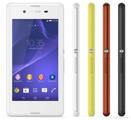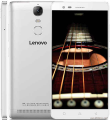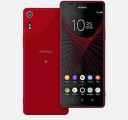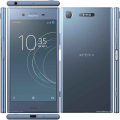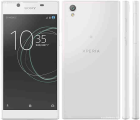Sony Xperia E3 Prices
Important Note.
- All prices are in Pakistani Rupee (PKR)
- Prices may vary at stores and our effort will be to provide you with the updated prices.
- Find out WhatMobile price has dropped in Pakistan by selecting Notify Price Drop button
- Find out WhatMobile has better specifications by clicking Add To Compare Button find out what Mobile has better reviews by visiting our reviews section
- Find out WhatMobile is cheaper on which retailer by clicking Compare prices from retailers button
Search Terms
- Sony Xperia E3
Specifications
| GENERAL | |
| 2G Network | GSM 850 / 900 / 1800 / 1900 - D2203, D2206, D2243, D2202 |
|---|---|
| 3G Network | HSDPA 850 / 900 / 2100 - D2203 HSDPA 850 / 1700 / 1900 / 2100 - D2206, D2243 HSDPA 850 / 900 / 1900 / 2100 - D2202 |
| 4G Network | LTE 800 / 850 / 900 / 1800 / 2100 / 2600 (Bands 1, 3, 5, 7, 8, 20) - D2203 LTE 700 / 1700 / 1900 / 2100 / 2600 (Bands 2, 4, 7, 17) - D2206 LTE 700 / 1700 / 2100 / 2600 (Bands 4, 7, 17) - D2243 |
| Sim | Micro-SIM |
| Announced | 15/09/2014 |
| Status | 2014, September |
| BODY | |
| Dimensions | 137.1 x 69.4 x 8.5 mm (5.40 x 2.73 x 0.33 in) |
| Weight | 143.8 g (5.08 oz) |
| DISPLAY | |
| Display Size | 480 x 854 pixels, 4.5 inches (~218 ppi pixel density) |
| MultiTouch | Yes, up to 2 fingers |
| Protection | Shatter proof glass |
| SOUND | |
| AlertTypes | Vibration; MP3 ringtones |
| LoudSpeaker | Yes |
| 3.5mm jack | yes |
| MEMORY | |
| CardSlot | microSD, up to 32 GB |
| Internal | 4 GB, |
| DATA | |
| GPRS | Up to 85.6 kbps |
| EDGE | Up to 237 kbps |
| Speed | HSPA 42.2/5.76 Mbps, LTE Cat4 150/50 Mbps |
| WLAN | Wi-Fi 802.11 b/g/n, Wi-Fi Direct, Wi-Fi hotspot |
| Blue Tooth | v4.0, A2DP |
| InfraredPort | Yes |
| NFC | yes |
| USB | microUSB v2.0, USB Host |
| CAMERA | |
| Camera Primary | 5 MP, 2592 ? 1944 pixels, autofocus, LED flash |
| Camera Features | Geo-tagging, touch focus, face detection, HDR, panorama |
| CameraVideo | 1080p@30fps |
| CameraSecondary | VGA |
| FEATURES | |
| Processor Cores | Quad-Core |
| OS | Android OS, v4.4.2 (KitKat) |
| CPU | Quad-core 1.2 GHz Cortex-A7 |
| Sensors | Accelerometer, proximity, compass |
| Messaging | SMS (threaded view), MMS, Email, IM, Push Email |
| Browser | HTML5 |
| Radio | FM radio with RDS |
| GPS | Yes, with A-GPS, GLONASS |
| Java | Yes, via Java MIDP emulator |
| Colors | Black, White, Yellow, Copper |
| Others | - ANT+ support - Active noise cancellation with dedicated mic - MP4/H.264 player - MP3/eAAC+/WAV player - Document viewer - Photo viewer/editor - Voice memo/dial |
| BATTERY | |
| Battery | Non-removable Li-Ion 2330 mAh battery |
| StandBy | Up to 706 h (2G) / Up to 661 h (3G) |
| TalkTime | Up to 12 h 20 min (2G) / Up to 8 h 41 min (3G) |
| MISC | |
| SARUS | 0.79 W/kg (head) 1.32 W/kg (body) |
| SAREU | 0.41 W/kg (head) 1.10 W/kg (body) |
Reviews
Sony is back again with another attempt to win in the low-end of the market, and barely days since many will have bought the Xperia E1 it's back, although this time with the curiously-named Xperia E3.
Well, not that curious given Sony is releasing a slew of phones with the number 3 appended, but it does mean some consumers might be a little confused.
They needn't be, as this is a phone that sees Sony adding more technology into the low-end mix in an attempt to convince those on a budget to join the family. The E3 is a chunkier beast than its more expensive Xperia Z3 and Z3 Compact brethren, but shares a lot of design similarities.
One of the cool things to make it over from the larger phones is the corner protection - this isn't a metal phone, but it still has the same nylon covers to keep it from being damaged through drops.
The Omnibalance design makes an appearance again, and the bezels above and below the screen are a chunky as ever. I'm still not sure why Sony keeps doing such a thing with its phones, as it doesn't look great, and with a 4.5-inch display on the Xperia E3, it's hardly like the phone needs to be as large.
That said, there are some interesting high-end elements to talk about here, especially as they're things you wouldn't expect to find in a phone that's challenging some of the cheapest handsets around. HDR mode in the 5MP camera is a welcome addition, and although the snaps I took were nowhere near the brightness and quality of the Z range, they weren't terrible.
One of the coolest features of the new E3 is the shake to start function, which allows you to set an app that's woken by just shaking the phone. Sadly, Sony didn't tell me about this so I couldn't check it out - but it looks like it will be a strong novelty that will appeal to the youth market, at which this phone is so clearly aimed.
There's no waterproofing here though - sadly it's not going to survive a dunking in a pool or drink. The plus side of this is the back is removable... although all this does is give access to the microSD slot and SIM card, with the battery still bolted in.
If you were hoping that this low-end phone could play PS4 games in the same vein as the other devices on show from Sony at IFA 2014, well, bad news. It's not happening, presumably due to the fact the CPU/GPU mix won't allow it.
It's not a bad processor under the hood, with a quad-core Qualcomm Snapdragon 400 CPU powering things along with 1GB of RAM. Sadly we're only treated to 8GB of onboard storage too, but that can be augmented with the aforementioned microSD slot.
The battery is pretty large for a phone of this calibre though, with a 2330mAh option combined with Stamina Mode in order to help it last longer whether you're watching movies or playing games.
Even the lower-res of the screen (the old school 854x480 pixels) didn't mean a poor movie watching experience, with the colours still pretty rich and clear. There's no doubt it's not going to impress anyone looking at the phone, but the mere fact you won't have to sell your first born to afford it should allay some of those fears.
Early verdict
The Sony Xperia E3 is another phone that's designed to do a job, and does it pretty well. It's meant to take some cues from the big Sony phones and bring them to a price point that the smartphone naysayers can stomach.
The HDR mode and wider viewing angles of the screen make it feel a lot more premium, and while I find the chassis too chunky I don't think it will put off too many people.
Ultimately, it will come down to price. If it comes in at the same sub-£100 mark the Xperia E1 managed, then there's a good chance it will do well, especially if the Z3 and Z3 Compact garner positive receptions.
Write Your Own Review
My Recent Reviews
- Be first to post review for this product.
comments powered by Disqus





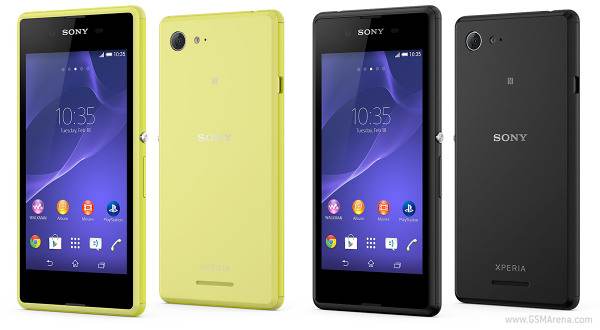
.jpg)
-470-75.JPG)
